Iridology Iris Diagnosis stands as one of the most intriguing practices in alternative medicine, using the patterns, colors, and other characteristics of the iris to identify potential health concerns. This ancient diagnostic method suggests that the iris, the colored part of the eye, contains a detailed map reflecting the condition of various organs and systems throughout the body. As we explore the rich history and ongoing evolution of this practice, we’ll uncover how it has developed from early observations to the sophisticated analysis methods used today.
Origins of Iridology Iris Diagnosis
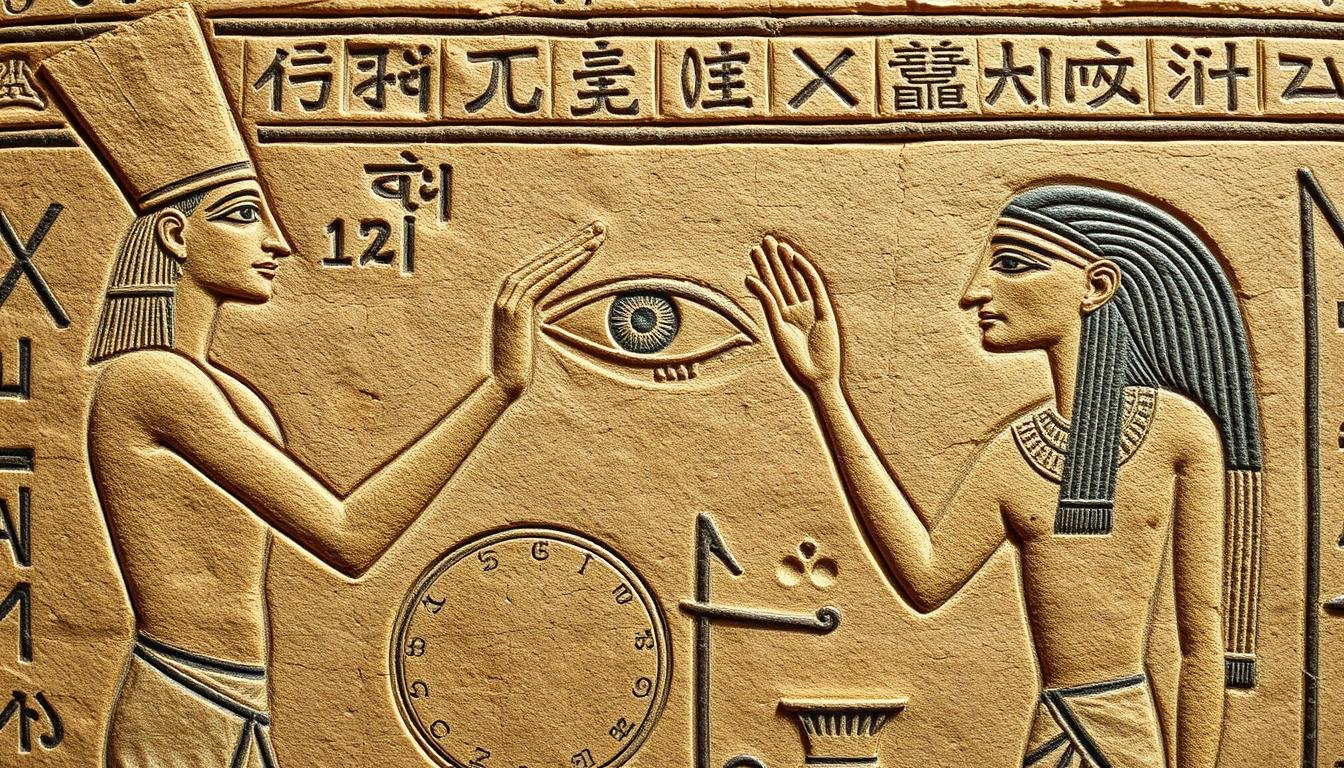
Ancient civilizations recognized the significance of eye patterns in health assessment
The concept that the colored part of the eye could reveal information about one’s health dates back thousands of years. Historical records suggest that early forms of iridology iris diagnosis may have emerged in ancient Egypt, China, and India, where physicians observed connections between changes in the eyes and various health issues.
Early Practices and Beliefs in Iridology Iris Diagnosis
Ancient healing traditions across multiple civilizations recognized the eyes as “windows to the soul” and, more practically, windows to bodily health. Early practitioners noticed that certain eye characteristics corresponded with specific health problems. In traditional Chinese medicine, for instance, different sections of the iris were associated with the five elements and their corresponding organs. These observations laid the groundwork for what would eventually develop into more systematic approaches to iridology iris diagnosis.

Traditional Chinese medicine incorporated eye examination as part of holistic diagnosis
While these early practices lacked the scientific framework we seek today, they demonstrated remarkable intuition about the connection between the colored part eye and overall health. Many ancient healing systems believed that the body was interconnected through energy pathways, and the iris served as a visible manifestation of these connections.
19th-Century Pioneers of Iridology Iris Diagnosis
Modern iridology iris diagnosis as we know it today began taking shape in the 19th century. The most frequently cited pioneer is Dr. Ignaz von Peczely, a Hungarian physician who, according to popular accounts, first noticed iris changes as a child when he observed an owl with a broken leg developing a dark streak in its iris.

Dr. Ignaz von Peczely, considered the father of modern iridology
This observation led von Peczely to develop his theories further during his medical practice. In 1881, he published his first book on iridology, “Discoveries in the Field of Natural Science and Medicine: Instruction in the Study of Diagnosis from the Eye.” His work included the first comprehensive iris chart mapping various body regions to specific areas of the iris.
Around the same time, Swedish homeopath Nils Liljequist independently developed similar theories after observing changes in his own iris following medical treatments. He published an atlas in 1893 that further advanced the field. These two pioneers, working separately but reaching similar conclusions, established the foundation for systematic iridology iris diagnosis.
“The iris of the eye is a mirror upon which each organ of the body registers its current condition through nerve reflex responses.” – Dr. Ignaz von Peczely
From “Discoveries in the Field of Natural Science and Medicine,” 1881
Scientific Evolution of Iridology Iris Diagnosis
As the 20th century progressed, iridology iris diagnosis continued to develop with contributions from practitioners worldwide. Dr. Bernard Jensen, an American chiropractor, became one of the most influential figures in bringing iridology to wider attention in the United States during the 1950s.

Dr. Bernard Jensen popularized iridology in the United States during the mid-20th century
Jensen refined existing iris charts and developed a more comprehensive system for analyzing the iris. His work emphasized the connection between iris signs and nutritional needs, establishing iridology as a tool for preventive health care rather than just diagnosis of existing conditions.
Technological Advancements in Iridology Iris Diagnosis
The late 20th and early 21st centuries have witnessed significant technological advancements that have transformed how iridology iris diagnosis is practiced. Digital photography, specialized iriscopes, and computer analysis have replaced the simple magnifying glasses used by early practitioners.
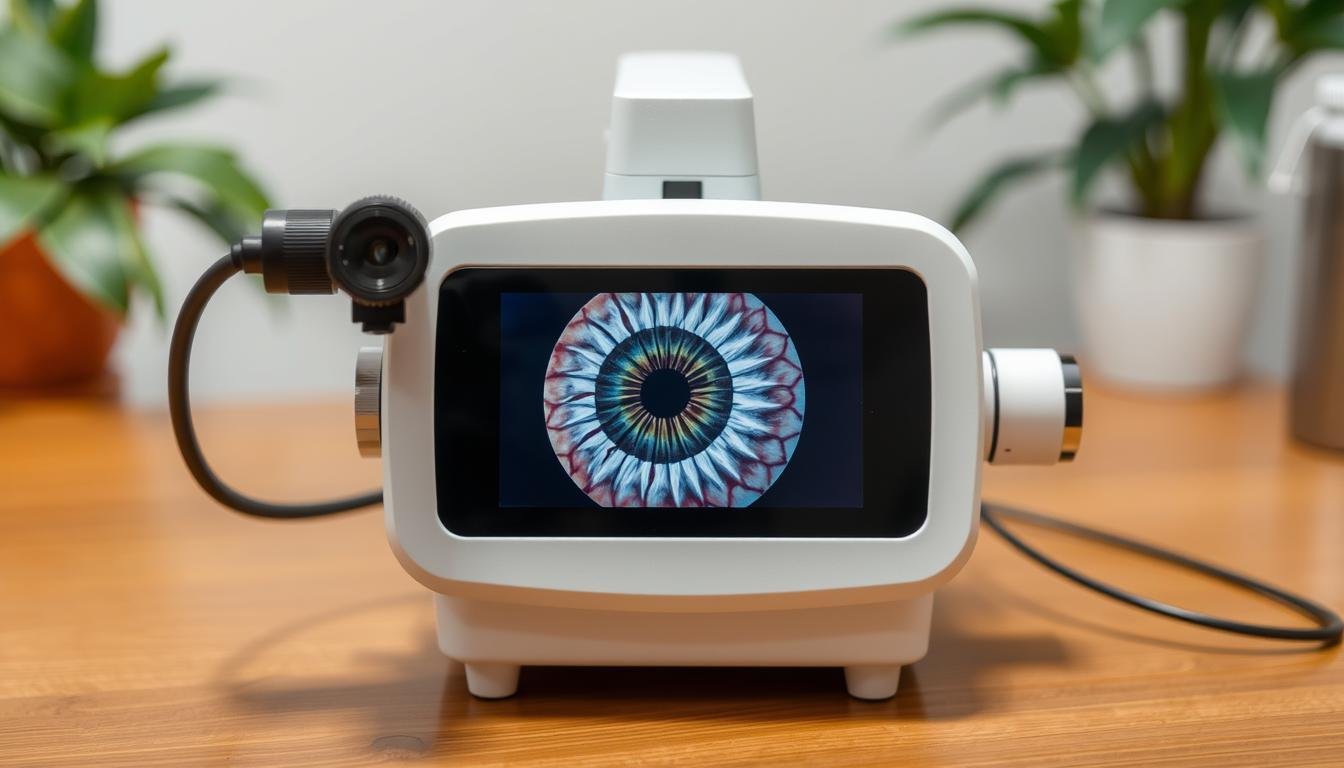
Modern digital iriscopes allow for detailed iris analysis and documentation
Today’s iridologists use high-resolution cameras specifically designed to capture the intricate details of the iris. These iridology cameras can detect subtle variations in iris structure and pigmentation that might be missed by the naked eye. Advanced iridology software can then analyze these images, identifying patterns and comparing them to comprehensive databases.
Professional Iridology Equipment
Looking for high-quality iridology tools for your practice? We offer professional-grade iriscopes, iridology cameras, and specialized software designed for accurate iris analysis.
Email Us For Details
Modern Applications of Iridology Iris Diagnosis
In contemporary practice, iridology iris diagnosis is used in various contexts within complementary and alternative medicine. Practitioners typically use it as one component of a holistic health assessment rather than as a standalone diagnostic tool.
Modern iridologists may look for signs of:
- Inflammation in various body systems
- Toxin accumulation
- Nutritional deficiencies
- Stress patterns affecting specific organs
- Constitutional strengths and weaknesses
- Lymphatic system congestion
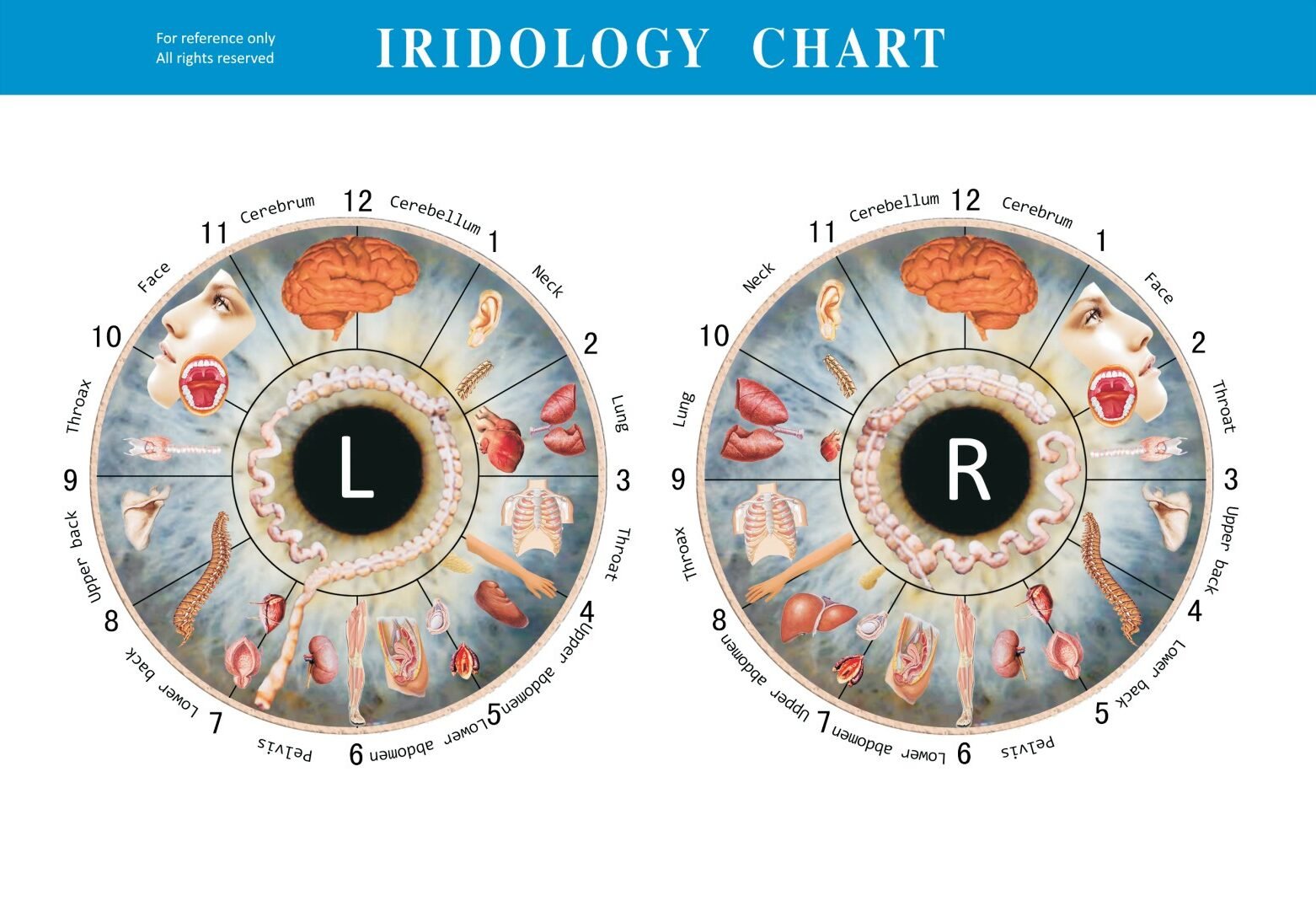

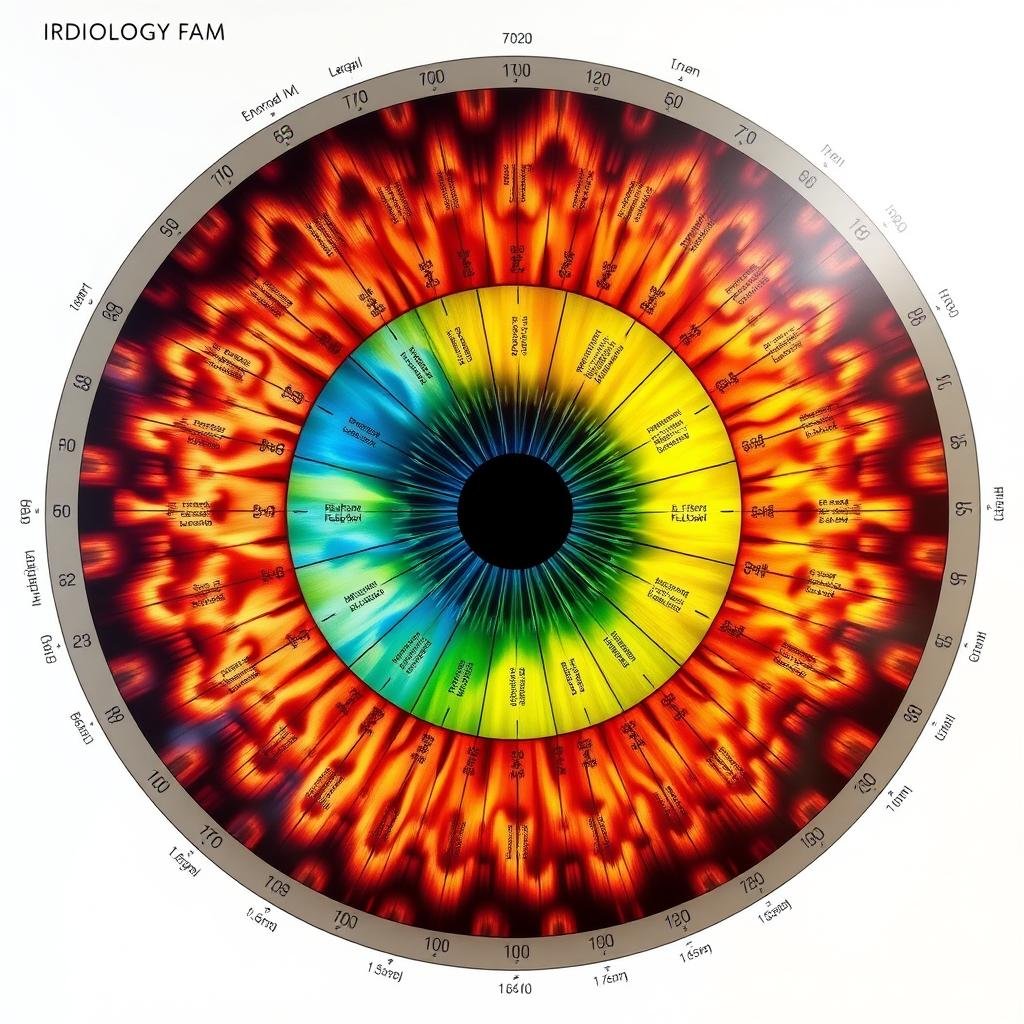
Modern iridology chart mapping iris zones to body systems
The iridology chart has also evolved, becoming more detailed and nuanced. Modern charts typically divide the iris into 60 or more zones, each corresponding to different organs and systems in the body. These charts may vary somewhat between different schools of iridology, but they share the fundamental principle that the iris contains a map of the entire body.
Controversies and Debates Around Iridology Iris Diagnosis
Despite its long history and continued practice, iridology iris diagnosis remains controversial within the broader medical community. Scientific studies examining the validity of iridology have produced mixed results, with many conventional medical institutions remaining skeptical of its diagnostic claims.
Proponents Argue
- Iridology provides insights into predispositions and tendencies rather than definitive diagnoses
- It can detect early signs of imbalance before clinical symptoms appear
- The iris contains detailed information about genetic inheritance and constitutional strengths
- It serves as a valuable complementary assessment tool alongside other methods
Critics Point Out
- Limited peer-reviewed research supporting diagnostic accuracy
- Lack of standardization across different iridology systems
- Potential for delayed proper medical treatment if relied upon exclusively
- Difficulty in establishing clear cause-and-effect relationships between iris signs and health conditions
A systematic review published in 1999 examined four controlled studies on iridology and concluded that the evidence did not support iridology as a reliable diagnostic method. However, proponents argue that many studies fail to account for the nuanced way iridology is actually practiced, focusing too narrowly on specific disease diagnosis rather than constitutional assessment.
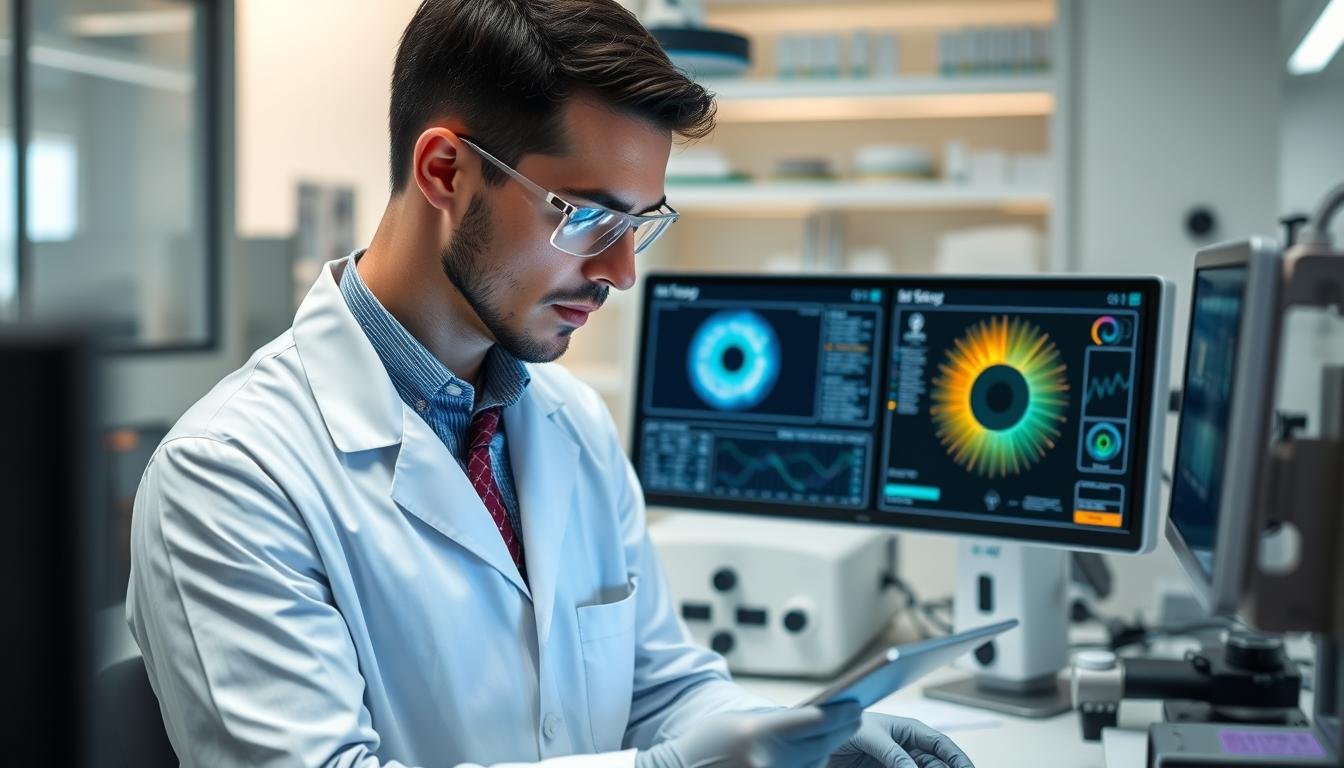
Scientific research continues to examine the validity of iridology claims
It’s important to note that most responsible iridologists do not claim to diagnose specific diseases solely through iris examination. Rather, they view it as one tool among many for assessing overall health patterns and tendencies. Many recommend that clients also seek conventional medical care for diagnosis and treatment of specific conditions.
Important Note: Iridology iris diagnosis should be considered a complementary approach rather than a replacement for conventional medical diagnosis. Always consult with qualified healthcare professionals for medical concerns.
Future Trends in Iridology Iris Diagnosis
As we look to the future, several emerging trends may shape the continued evolution of iridology iris diagnosis. Technological innovation, in particular, offers new possibilities for enhancing the practice.
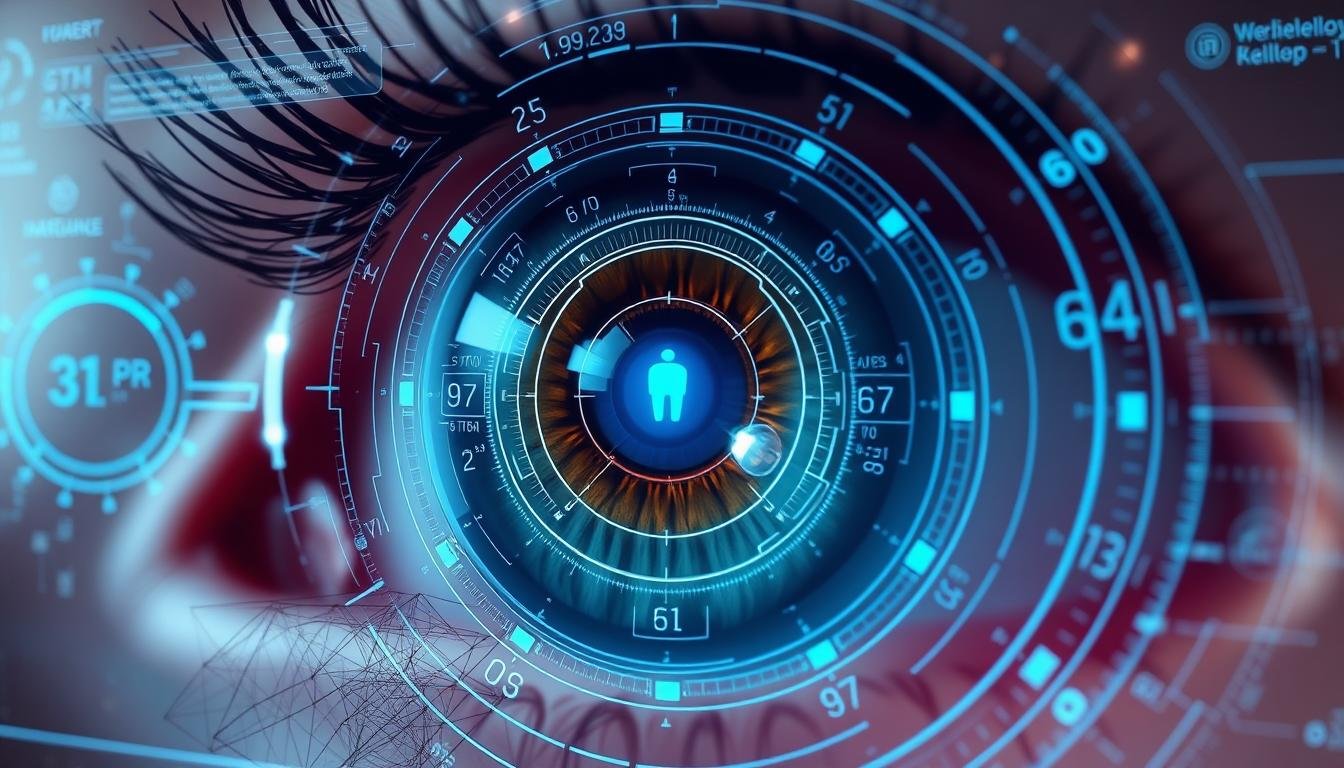
AI and advanced imaging technologies may enhance future iridology analysis
AI Integration
Artificial intelligence and machine learning algorithms are beginning to be applied to iris analysis, potentially identifying patterns and correlations that human practitioners might miss. These technologies could help standardize iridology practices and provide more consistent analyses.
Research Developments
More rigorous research methodologies are being applied to study iridology, including larger sample sizes and better controls. This may help establish which aspects of iridology have scientific merit and which require reconsideration.
Integrative Approaches
There is growing interest in integrating iridology with other assessment methods, both conventional and alternative. This holistic approach recognizes that no single diagnostic method is complete on its own.
As with many alternative health practices, the future of iridology iris diagnosis likely lies in finding the appropriate balance between traditional wisdom and modern scientific understanding. The most promising path forward may be one that preserves the valuable insights of iridology while subjecting its claims to rigorous investigation.
Stay Updated with the Latest in Iridology Technology
Our company provides cutting-edge iridology equipment and training resources for practitioners worldwide. Contact us to learn about our latest products and educational materials.
Conclusion
The journey of iridology iris diagnosis from ancient observations to modern practice reflects humanity’s enduring fascination with the eyes as indicators of health. While debates about its efficacy continue, iridology remains a significant component of many complementary and alternative medicine systems worldwide.
Whether viewed as a definitive diagnostic method or a complementary assessment tool, iridology offers a unique perspective on the relationship between the iris and overall health. As technology advances and research continues, our understanding of this relationship will likely evolve further.
For those interested in exploring iridology iris diagnosis, it’s important to approach the subject with both an open mind and critical thinking. The most beneficial approach may be to consider iridology as one component of a comprehensive health assessment strategy rather than a standalone diagnostic system.
Professional Iridology Equipment & Support
As global leaders in iridology technology, we provide high-quality iriscopes, iridology cameras, software, and iris charts to practitioners worldwide. Our products are designed for precision, reliability, and ease of use.
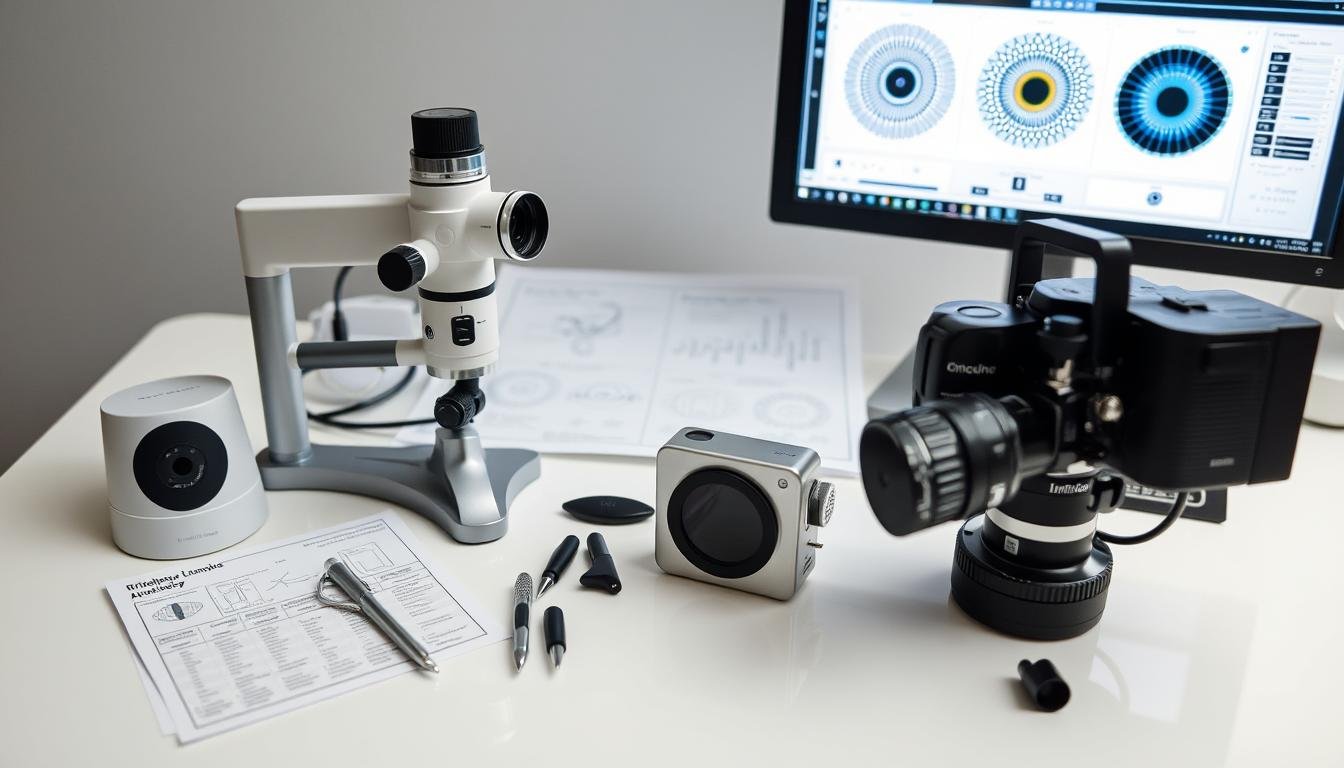
Professional iridology equipment for accurate iris analysis and diagnosis























